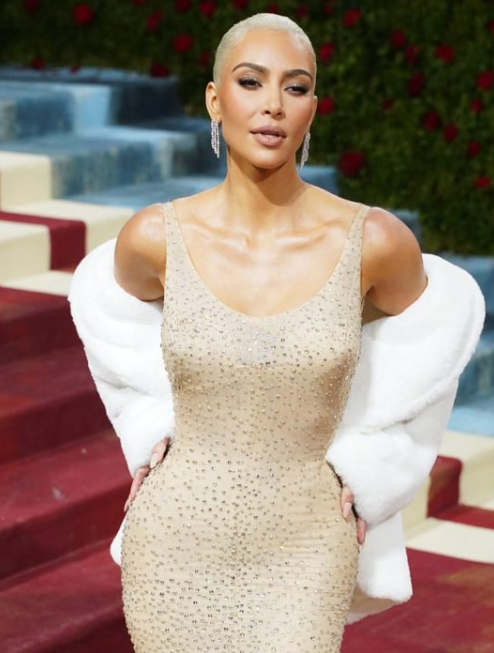Fashion
Written By Molly Elizabeth Agnew
Thin is back in say outlets and social media users. We have swiftly moved past the positive progression within the fashion and modelling industries and have landed straight back at the skinny idolisation of the 1990s and 2014 era Tumblr. It was clear during the most recent fashion month that designers are going back on their pledges to feature more plus-size models, instead showing just one token plus-size model or none at all. Lowrise jeans and the seismic popularity of the Miu Miu ultra mini skirt and exposed mid-sections have everyone agreeing that skinny is certainly back, but, how can skinny be back when it never really left?
The body-positive movement has, for some years, risen into popularity in the fashion world, something that almost everyone could appreciate. While it took far long to begin seeing any kind of change, things definitely did begin to convert. However, we are going back in time…or are we? Did we ever leave the thin-loving aesthetic?
Throughout Western history, thin has continually been in vogue even if it has been adapted to suit different shapes and styles. The 1920s flapper was straight and ‘boyish’ and yet the 1950s style was romantic and shapely, but both put importance on thinness. In the supermodel partying era of the 1990s, being thin meant working hard and playing equally as hard, often spending the weekends in a haze of drink and drugs. As social media rose to dangerous dominance, Tumblr became the new skinny-inspo site, with ‘pro-ana’ and eating disorder content reigning. So, what of today?

In retrospect, we have realised that the content swirling around social media sites in the early 2010s was deeply problematic and that doing one too many lines of co*ke a week can be incredibly dangerous for our physical and mental health. One could possibly argue that our current relationship with our bodies and aesthetics may even be more menacing. While the past was overt, today is covert and smothered in all the loveliness of wellness and a calming, clean lifestyle of control. A quick search of #cleangirl on TikTok reveals a world of the classic euro-centric beauty standard, slim white women with straight hair doing natural-looking makeup and cooking ‘clean’ meals. While there is nothing immediately wrong with the clean girl trend at first glance, (because why shouldn’t someone enjoy an aesthetic or lifestyle that genuinely brings them joy and peace in this chaotic world?) the complete dominance of this trend across all social media platforms is a cause for concern. It doesn’t take long at all for a perfectly innocent lifestyle, designed to slow down and nurture our lives, to quickly become a screen hiding a negative control and obsession with our bodies. Moreover, if there is a clean girl then that also means there is a ‘dirty girl’, and no one wants to be her. The dangers are hiding behind the positivity.
On the other hand, we also have those with power in the industry continually refusing to face these problems and, even worse, honouring people who have been so violent with their language about women’s bodies. Just weeks ago Vogue announced alongside The Met Museum that the theme for the 2023 Met Gala, the most hotly anticipated fashion event of the year, would honour the late Karl Largerfeld. Karl Lagerfeld: A Line of Beauty will look back at the designer's impact on the fashion industry through the years and his design process. Over his 65 years in the industry Lagerfeld built up rather a reputation, and not always a good one. He was notoriously outspoken about his beliefs that runway models should always be able to wear sample-size garments, meaning they shouldn’t go above a UK size 6 which is a US size 2. "No one wants to see curvy women," he told Focus in 2009. He continually defended the obsession with thinness in the industry calling fatness “dangerous and very bad for the health” while also saying during his time at Chanel that the brand representing larger sizes was a “bore” and “ridiculous”. In addition to this, he attacked supermodel Heidi Klum for being “too heavy” and said that Adele was “a little too fat.” He was also anti-same-sex marriage and disapproved of the #MeToo movement. Could this exhibition honour his genuinely impressive art which cannot be denied while also quickly touching on these problematic remarks? Of course, they could, but it’s doubtful that they will.

Sticking with The Met Gala, cast your minds back to May of this year and Kim Kardashian squeezing into one of Marilyn Monroe’s most famous, and precious, gowns. As much as we’d love to forget that whole exploit, it’s important to remember an aspect many glossed over. Speaking to reporters at the star-studded event, Kim rather proudly remarked that she had lost 16 pounds in just weeks in order to fit into the archived dress. “I said, ‘Give me like three weeks.’ And I had to lose 16 pounds down today to be able to fit this. It was such a challenge. It was like a role. I was determined to fit it.” said Kardashian, adding, “Since I haven’t eaten carbs or sugar in about three weeks, we’re eating a pizza and doughnut party back at the hotel.” What is perhaps most disturbing about this moment is that Kardashian is set on saying that she didn’t starve herself, instead she simply “would wear a sauna suit twice a day, run on the treadmill, completely cut out all sugar and all carbs, and just eat the cleanest veggies and protein. I didn’t starve myself, but I was so strict.” Has a slight whiff of clean girl doesn’t it? ‘It can’t be bad for me, look I’m helping my body!’.

Possibly the most recognisable runway trend from recent seasons is the Miu Miu ultra mini skirt. Earlier this year it was seen worn on plus-size model Paloma Elsesser (who looked phenomenal, just to note) but there was one glaring problem. The Miu Miu skirt, which retails for £780, only goes up to a UK size 14, and the average size in the UK is a 16. The skirt worn by Elsesser on the cover of I-D magazine was commissioned specifically for her sizing, proving that the brand can do it, but simply don’t. Why though? At best it’s lazy, at worst it’s purposeful exclusion.
Skinny isn’t back in, it never left. Brands, corporations and celebrities simply capitalised on the body-positive idea in order to make them look ‘good’ and we fell for it.
You May Also Like:
Is Formula 1’s Future Dependent on Fashion?
The Royal Pantsuit Resurgence
What Made The 90s Supermodels So Special?
The Flattery of Imitation - Peter Hawkings Takes On Tom Ford
Catching Up With London - LFW SS24
Frolov’s Ode To The Ukrainian Woman
In Defence Of The Sandy Liang Bow
Are Peter Do and Helmut Lang The Perfect Pairing?
Fashion
Molly Elizabeth Agnew
Founder of Eternal Goddess.
I am an expert in the field of fashion and cultural trends, having immersed myself in the industry with a keen eye for both historical patterns and contemporary developments. My knowledge extends beyond the surface level, delving into the intricacies of fashion history, societal influences, and the dynamic relationship between body image and the fashion world.
The article in question, penned by Molly Elizabeth Agnew, touches upon several critical concepts within the realm of fashion and body image. Let's break down the key elements and delve into the associated concepts:
-
Body-Positive Movement: The article reflects on the body-positive movement, acknowledging its rise in popularity within the fashion industry. This movement advocates for diverse body shapes and sizes, challenging traditional beauty standards.
-
Historical Perspective on Thinness: The author draws on Western history to highlight that the preference for thinness has been a consistent theme, even as fashion styles and ideals evolved over the decades. Examples from the 1920s flapper era to the supermodel culture of the 1990s underscore the enduring emphasis on thinness.
-
Social Media Influence: The narrative explores the impact of social media on body image, referencing platforms like Tumblr and their role in promoting 'pro-ana' content. It acknowledges the problematic nature of such content and its potential impact on mental and physical health.
-
Clean Girl Trend on Social Media: The article critiques the prevalence of the 'clean girl' trend on social media platforms, particularly TikTok. While acknowledging the aesthetic appeal, it raises concerns about the potential negative effects, suggesting that what seems innocent may mask an unhealthy obsession with body image.
-
Influence of Industry Figures: The article brings attention to the problematic statements made by influential figures in the fashion industry, citing Karl Lagerfeld as an example. Lagerfeld's comments on body size and his influence on runway standards are discussed, questioning whether an exhibition should honor his legacy despite his controversial views.
-
Celebrity Influence on Body Image: The article mentions Kim Kardashian's weight loss for a specific event, highlighting the extremes she went through to fit into a historical gown. This example underscores the pressure celebrities may feel to conform to certain body standards in the public eye.
-
Fashion Industry Practices: The discussion about the Miu Miu ultra mini skirt addresses issues of size inclusivity in the fashion industry. Despite featuring a plus-size model, the article points out that the available sizes for the showcased skirt do not cater to the average size in the UK, suggesting either laziness or purposeful exclusion by the brand.
-
Criticizing Tokenism in Fashion Shows: The article criticizes fashion designers for potentially reverting to tokenism, showcasing only one plus-size model or none at all during fashion events, despite previous pledges to diversify representation.
In summary, the article provides a comprehensive exploration of the complex interplay between body image, fashion trends, historical influences, and the role of influential figures and social media in shaping perceptions within the industry.